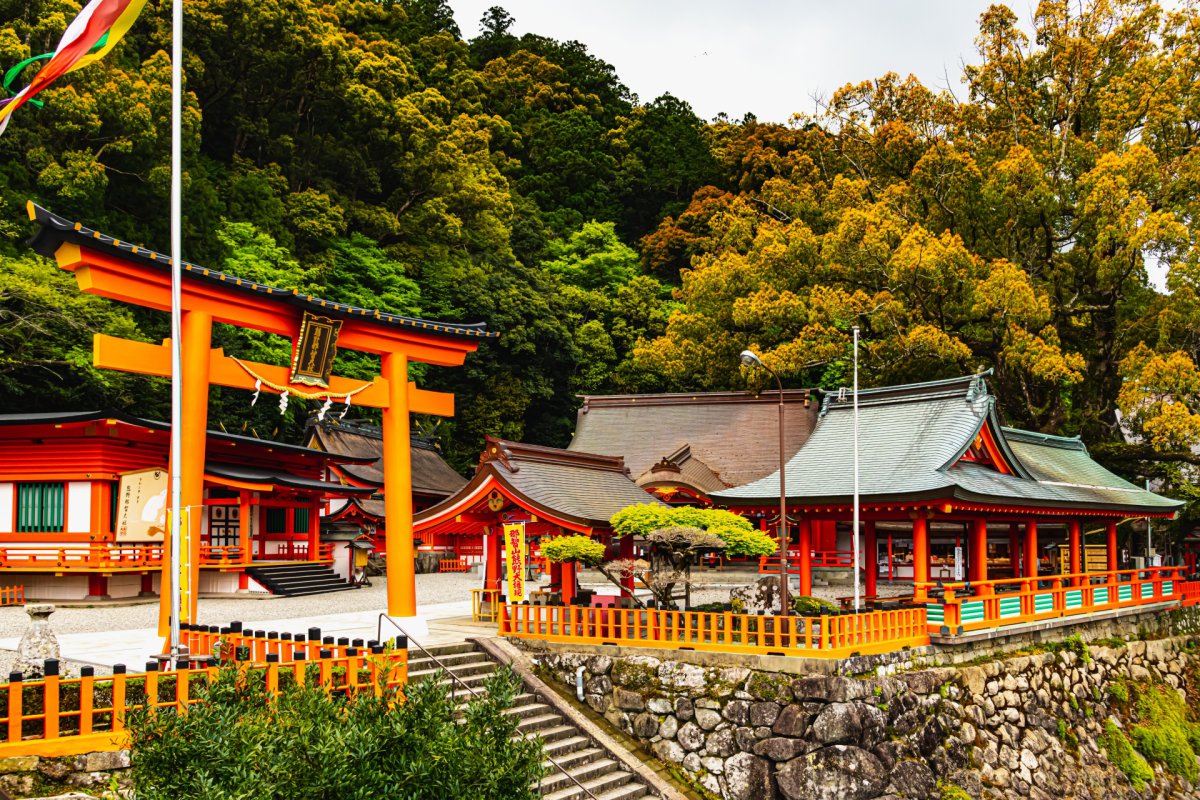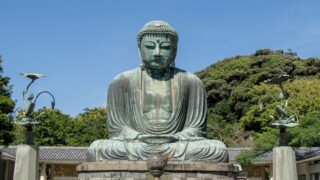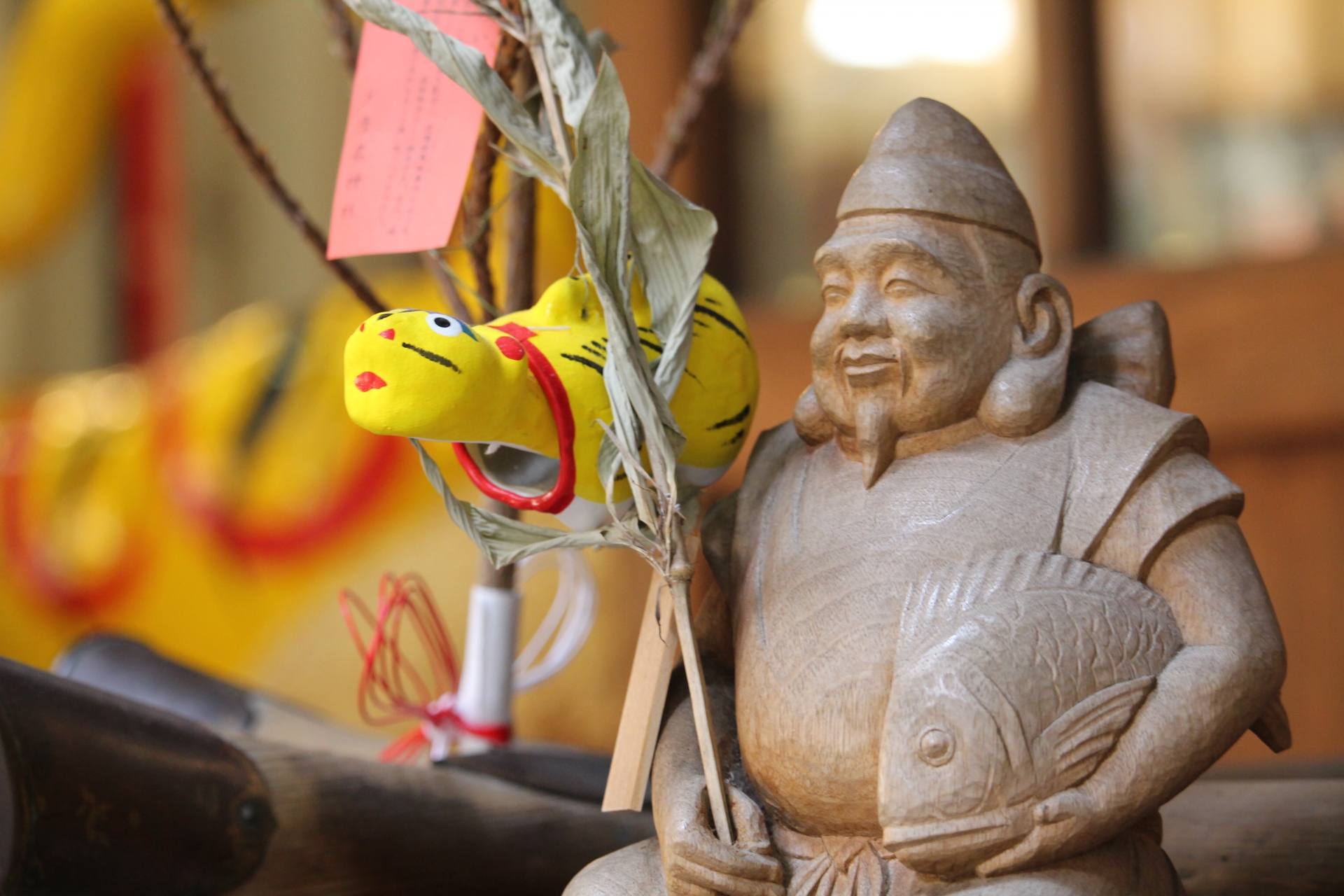Ever since Buddhism was first introduced to Japan in the mid-6th century, the process of blending Buddhism with Shintō has dominated the religious life of the people up to the present. There is no exact agreement about the extent of the fusion of the two. After Buddhism entered Japan, the term Shinto was introduced to distinguish the beliefs from each other. However the two religions soon became intertwined. In this article, we briefly explain Shinbutsu-shugo and introduce shrines and temples where you can see examples of this fusion.
1. What is Shinbutsu-shugo?
Shintoism is the Japanese indigenous religion based on an ancient system of animistic beliefs and customs. The exact origin remains unclear, but the beliefs have a long history based upon the ancient lifestyle in which the relation of humans with nature was centralized.
When Buddhism was introduced to Japan in 552, some many Japanese people saw it as a threat to the status quo, where others, especially the internationalists in the Japanese court welcomed Buddhism. The situation changed drastically after the emperor Suiko, who had a strong belief in Buddhism, officially enthroned in 592. After that, Buddhism started to have a huge influence on the development of the whole society with the strong support of emperor and other authorities. It resulted in spreading around the country with countless numbers of temples built everywhere.

However, Japan would never fully abandon its native religion, but rather they tried to reconcile Buddhism with Japanese indigenous religion. By absorbing Buddhism gradually and mixing it with local folk religions, a fusion of Buddhism and Shintoism was born: Shinbutsu-Shugo or Shinbutsu Konko, which can be freely translated as mixing kami (Shinto gods) and Buddha.
As a result, Buddhist temples were attached to local Shinto shrines and vice versa, and in some instances both places were devoted to both kami (Gods) and Buddhas. It was common to build temples at shrines called “shrine-temples” and shrines at temples called “temple-shrines”.
In 1868 during the Meiji Period, the Japanese government ordered the separation of the two religions, and Shintoism was proclaimed as the national religion. During the Meiji period, in order to help the spread of Shintoism and to minimize the spread of Buddhism, most of the shrine-temples were destroyed while temple-shrines were tolerated. As a result, shrine-temples are now rare while temple-shrines are common, and many temples still have at least a small temple-shrine. Still today we can see evidence of the peaceful cohesion of the two religions in Buddhist temples and Shinto shrines all around the country.
The mix of these two religions is also rooted in people’s everyday lives in Japan even today. Many Japanese have both Shinto god shelves (kamidana) and Buddhist altars (butsudan) in their house and observe Shinto rites for marriage and Buddhist rites for funerals.
At the following places you can visit some great examples of Shinbutsu-shugo.
2. Senso-ji Temple
Sensoji Temple, also known as Asakusa Kannon Temple, is a Buddhist temple located in Asakusa in Tokyo. It is the oldest Buddhist temple in the capital and is perhaps Tokyo’s most famous and photographed temple. Although Sensoji Temple was founded in 628 the current building is much more modern, as it was rebuilt after being destroyed in WWII.
When approaching the temple, visitors first enter through the Kaminarimon (Thunder Gate), the outer gate of Sensoji Temple and the icon of Asakusa due to its huge red lantern. Between Kaminarimon and the temple’s second gate, a shopping street known as Nakamise dori stretches over 200 meters.
Within the Senso-ji Temple complex, you will find Asakusa Shrine which enshrines three gods that contributed to the foundation of Asakusa and Senso-ji Temple. Sensoji Temple is also famous for Sanja Matsuri, one of the Three Great Festivals of Edo (former name of Tokyo). The festival is held on the third Saturday and Sunday in May every year at Asakusa Shrine and welcomes 1close to 2 million visitors each year.

How to get to Sensoji Temple
The temple is located a short walk from Asakusa Station
3. Kinpusenji Temple
Kinpusenji Temple, located on Mount Yoshino in Nara Prefecture, is one of the most important temples of Shugendo, a religion based on mountain worship that combines both Buddhism and Shinto. The temple was designated a World Heritage site in 2004.
One of the highlights of this temple is the Zaodo Hall, which was built around 1592. It is a gigantic wooden structure, 34 meters tall and 36 meters wide. The building is said to be the second largest wooden structure in Japan behind Nara’s Todaiji Temple. Detailed figures are sculpted on both the exterior and interior walls of the building, making the architecture even more beautiful and rich. Together with the Zaodo Hall, the two-storied Niomon Gate has been designated as a national treasure. The two statues of Kongo Rikishi on either side of the gate are the second largest in Japan, standing five meters tall
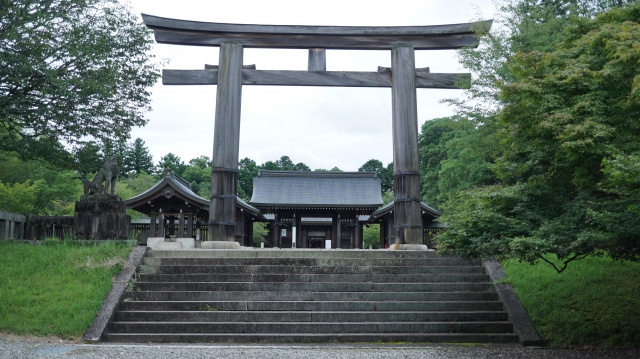
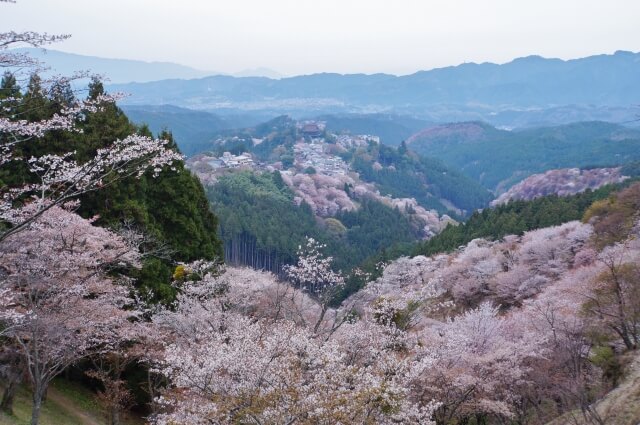
How to get to Kinpusenji Temple
Ten minute walk from the upper station of the Yoshino Ropeway (Yoshinoyama Station).
4. Seiganto-ji Temple & Kumamoto Nachi Taisha, Wakayama
Located in the Wakayama Prefecture, Seiganto-ji Temple was listed as a UNESCO World Heritage Site in 2004. The most notable feature of the temple is the beautiful red three-storied pagoda with the stunning Nachi Falls at its backdrop. The temple was purposely built near the falls, where it may have previously been a site of nature worship. Seiganto-ji can be found directly beside Kumano Nachi Taisha, and as such can be considered one of the few examples of shrine-temples. The buildings have mostly functioned as one religious institution, demonstrating the often harmonious relationship between Buddhism and Shintoism.


How to access Kumano Nachi Taisha
Take the Kumano Kotsu Bus from Kii-Katsuura Station, get off at the Nachisan bus stop (30 minutes). Alternatively, take the bus from Shingu station, get off at Jinja Otera-mae (15 minutes).
5. Kenchoji Temple, Kamakura
The oldest and most important Zen temple in Kamakura in Kanagawa Prefecture, Kenchoji Temple, was founded by the regent Hojo Tokiyori in 1253. Kenchoji was originally the exclusive Zen training temple in Japan, but also includes two shrines.
Although considerably smaller than during its heydays, Kenchoji still consists of a large number of temple buildings and sub-temples. After passing through the Sanmon main gate, visitors will see Kenchoji’s temple bell (Bonsho), designated a national treasure, on their right.
If you follow the path and stairways for another 15 to 20 minutes into the hills behind Kenchoji’s main grounds, you will eventually arrive at the Hansobo which is a shrine that protects Kenchoji. You will also find a small observation deck from which Mount Fuji can be seen on clear days.

In Kamakura you can see more examples of the fusion of Buddhism and Shintoism; at Jogyoji Temple, you can see fox statues, a torii, a Buddhist stone pagoda, and Buddhist figures and at the Tsurugaoka Hachimangu hosts a shrine dedicated to a shinto deity.
How to access Kenchoji Temple
15 minute walk from Kita-Kamakura Station

Even many Japanese people do not know very well about Shinbutsu-shugo, but it is rooted deeply into Japanese history and people’s daily lives even today. If you know even a little bit about the relationship between Shintoism and Buddhism in Japan, you will be able to enjoy the visits to Japanese shrines and temples even more.
Follow us on Instagram or Facebook for more travel inspiration. Or tag us to get featured!
Happy travelling!
